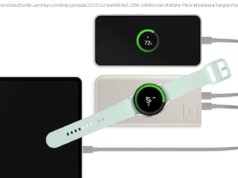Lenovo is aiming to make VR content creation significantly better and more affordable with the introduction of the new Mirage Camera. Designed to complement the Mirage Solo headset that was also released today, the Mirage Lenovo is aiming to make VR content creation significantly better and more affordable with the introduction of the new Mirage Camera. Designed to complement the Mirage Solo headset that was also relea
Lenovo is aiming to make VR content creation significantly better and more affordable with the introduction of the new Mirage Camera. Designed to complement the Mirage Solo headset that was also released today, the Mirage Camera is a compact point and shoot camera – with two lenses.
The 139g Lenovo Mirage Camera is barely larger than a common wallet, but packs two 13MP sensors fitted with fisheye lenses, and depth information is captured thanks to the same images captured at slightly different angles. Both lenses also feature 180 degrees field of view. Controls are also made to be dead simple, with just three buttons: power, shutter, and function.
Inside, the Lenovo Mirage Camera is powered by a Qualcomm Snapdragon 626 processor with 2GB of RAM and 16GB of expandable storage. Built-in WiFi and USB Type C is standard, but there’s also an LTE version featuring a Qualcomm X9 LTE cellular modem. The removable battery is rated for up to two hours of continuous high-resolution recording.
The camera is also designed to be as simple as capturing VR content with it. Photos and videos captured on the Mirage Camera can be easily uploaded to the user’s Google Photos or YouTube accounts. It can also live stream 4K VR footage to YouTube directly from the device. Meanwhile, the VR180 app expands the camera’s usability, allowing users to use the phone as a viewfinder and remote shutter. The VR180 format eliminates the need for specialised VR videography skills and 3D VR hardware, allowing casual users to simply point, shoot, relive, and share content in VR.
On top of that, content captured on VR180 acts just like standard 2D footage and images when used in standard apps and editing software. That also means that content viewed without a headset will reveal 2D footage and images. But once you view these images on a Google Cardboard or the Lenovo Mirage Solo Daydream headset, the content comes to life as the depth information is unlocked.
The Lenovo Mirage Camera is very much designed to complement the Lenovo Mirage Solo Daydream headset. Lenovo also did not reveal the price for the camera, but it is aiming to make it affordable to the masses to enable greater creation of VR180 content. It will be available alongside the Mirage Solo in Q2 2018.
Writes primarily about mobile-centric technology. Also possibly a Nokia/Apple/Android/Jolla/iOS/Samsung/HTC fanboy.






